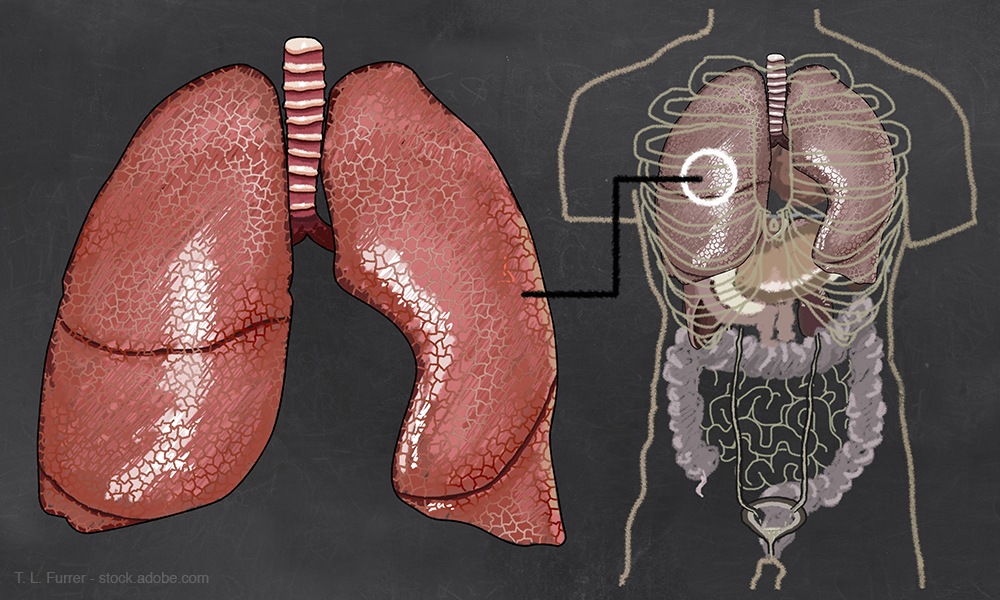Three COPD Risk Factors Providers Need to Tell Patients About
COPD is a chronic, progressive disorder that can lead to early death. Here are some ways to help mitigate the risk of developing this debilitating disorder.

Zeenat Safdar, MD

According to the Centers for Disease Control and Prevention (CDC), nearly 16 million Americans have been diagnosed with chronic obstructive pulmonary disease (COPD), a collection of chronic, progressive lung-based diseases, including emphysema and chronic bronchitis, that lead to breathing-related issues-and, often, early death.
Related article: Seven Surprising COPD Risk Factors Managed Care Organizations Should Watch
Unfortunately, while this disease can be effectively treated, COPD has no known cure. Zeenat Safdar, MD, a pulmonologist at Houston Methodist Hospital in Houston, says your best bet for avoiding this very common disease is to know-and avoid-the environmental risk factors that increase your odds of developing it.
“COPD is the third most common cause of death in the United States,” she says. “It’s an expensive disease to have-there’s a lot of cost associated with this diagnosis. The healthcare burden is really there for these patients and their families. Being aware of risk factors is important to being able to prevent a diagnosis.”
While genetic conditions like alpha-1 deficiency as well as childhood respiratory problems like asthma are related to the development of COPD as an older adult, there are many environmental exposures that can also confer significant risk. Here are the top three risk factors for COPD-and what providers can tell patients to do to prevent them:
1. Smoking
The American Lung Association says approximately 85-90% of COPD cases are due to smoking. Safdar says smoking is one of the most significant risk factors for developing COPD later in life.
“This is a crippling disease-and one of the biggest pushes we make to help prevent COPD is to encourage patients to not smoke, or if they do smoke, to stop smoking,” she says. She adds that this goes beyond tobacco cigarettes or pipe smoking: vaping, e-cigarettes, and shisha smoking also confer risk, as does smoking of recreational drugs.
“Some people don’t consider these activities smoking. There’s a misconception that they are not,” she says. “But even these activities predispose a person to COPD development in the later part of their lives. Smoking anything should be avoided at all costs.”
Unfortunately, smoking does not just affect the smoker. Second-hand smoke is also a risk factor for pulmonary issues.
“If you smoke around your friends or your family, you also put them at risk,” Safdar says. “You and the people you love want to be in a smoke-free environment.”
2. Chemicals, dust, and fumes
While being in a smoke-free environment may be one of the most important things people can do to avoid developing COPD, Safdar says some people may be exposed to contaminated air due to the nature of their work. These environmental exposures-breathing in toxic fumes or chemicals-can result in a variety of pulmonary problems, including COPD.
“People may work on farms and inhale different chemicals during that work-that can put them at a higher risk,” she says. “There may be issues at different factories or other workplaces, too. It’s important that people who are in these environments wear proper masks and protect themselves so they aren’t inhaling these dangerous things.”
3. Air pollution
Another risk factor for COPD is poor air quality. Safdar says that clean air is very important-and breathing in polluted air is a public health concern.
“Pollution is becoming a big issue-it’s a huge risk factor for pulmonary disease, including COPD,” she says. “People who are in large cities, with many cars, or people who live in places with regular dust storms, should be considering these things as risk factors. Be careful and wear a mask if you need to.”
Related article: Top Five Reasons for COPD Hospitalizations
Beyond awareness of COPD risk factors and taking steps to mitigate those risk factors as needed, Safdar says people should also regularly see their doctor to understand their risk for pulmonary disease-and what they, personally, can do to prevent or manage it based on their environments and medical histories.
“Do regular check-ups and follow-ups with your doctor,” she says. “Doing so can help prevent the long-term inflammation happening in the lungs over long periods of time that, unchecked, can lead to COPD.”
Kayt Sukel is a science and health writer based outside Houston.
Conversations With Perry and Friends
April 14th 2025Perry Cohen, Pharm.D., a longtime member of the Managed Healthcare Executive editorial advisory board, is host of the Conversations with Perry and Friends podcast. His guest this episode is John Baackes, the former CEO of L.A. Care Health Plan.
Listen
Breaking Down Health Plans, HSAs, AI With Paul Fronstin of EBRI
November 19th 2024Featured in this latest episode of Tuning In to the C-Suite podcast is Paul Fronstin, director of health benefits research at EBRI, who shed light on the evolving landscape of health benefits with editors of Managed Healthcare Executive.
Listen